Turkey hunting involves spending long hours in the woods and fields calling, waiting, and scoping for wild turkeys. And where there is prime turkey territory, venomous snakes are often not far away. That’s why specialized snake boots are essential gear for staying protected on spring turkey hunts.
In this guide, you’ll learn:
- The risk of snake bites while turkey hunting
- How snake boots provide bite protection
- Key features to look for in snake boots
- Reviews of the top Snake boot brands & models
- Tips for choosing the right size, fit, and style
- How to break in and care for snake boots
Read on for everything you need to know to shop smart and choose the best snake boots for your turkey hunting needs.
The Danger of Snakes While Turkey Hunting
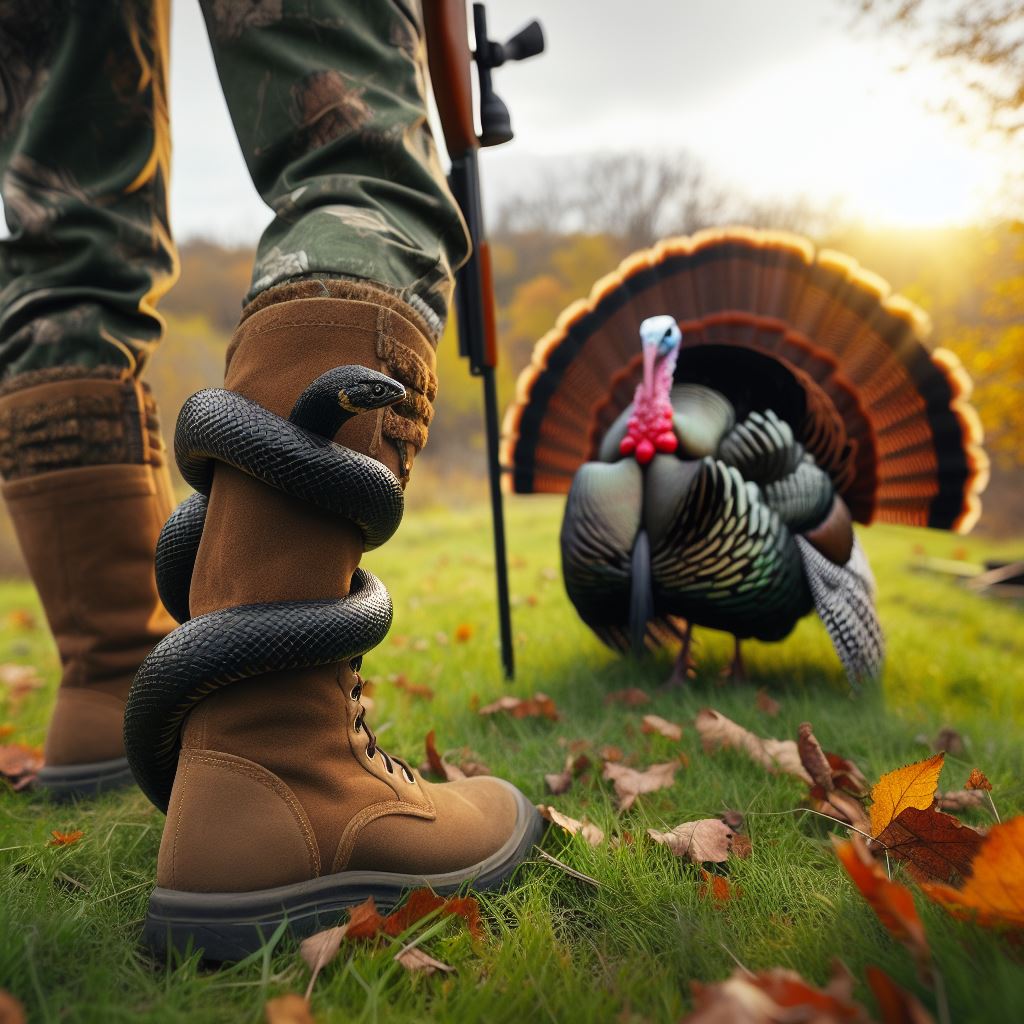
Turkey hunters often set up concealed blinds or sit motionless against trees while calling, scattering decoys and waiting for that gobbler to appear. This puts you directly in snake territory and danger.
Venomous snakes like rattlesnakes, copperheads, cottonmouths and others thrive in the scrub, forests and fields inhabited by wild turkeys. And the spring turkey season coincides with snake’s most active time when they emerge from hibernation.
If a hidden snake is accidentally startled or stepped on during your hunt, it will strike. Snake bite injuries while turkey hunting increase during spring months for this reason. A suitable pair of snake boots provides vital protection.
How Snake Boots Prevent Bites
Snake boots are specially constructed boots that extend at least 16 inches up the leg and use puncture-proof materials to create a snake bite barrier. This prevents fangs from penetrating and injecting venom.
Several key features make snake boots effective:
- Tall shafts cover feet, ankles, calves to block access points for snake bites. 16-18 inches is recommended.
- Thick leather or abrasion-resistant fabric provides a tough external layer.
- Snake guards made of fiberglass, Kevlar or carbon shield the boot interior.
- Sealed seams prevent snake fangs from penetrating vulnerable stitching.
The combination of height, materials, guards and sealed seams makes properly fitted snake boots impenetrable to snake fangs. This gives turkey hunters peace of mind against surprise snake strikes.
Top Snake Boot Brands and Models
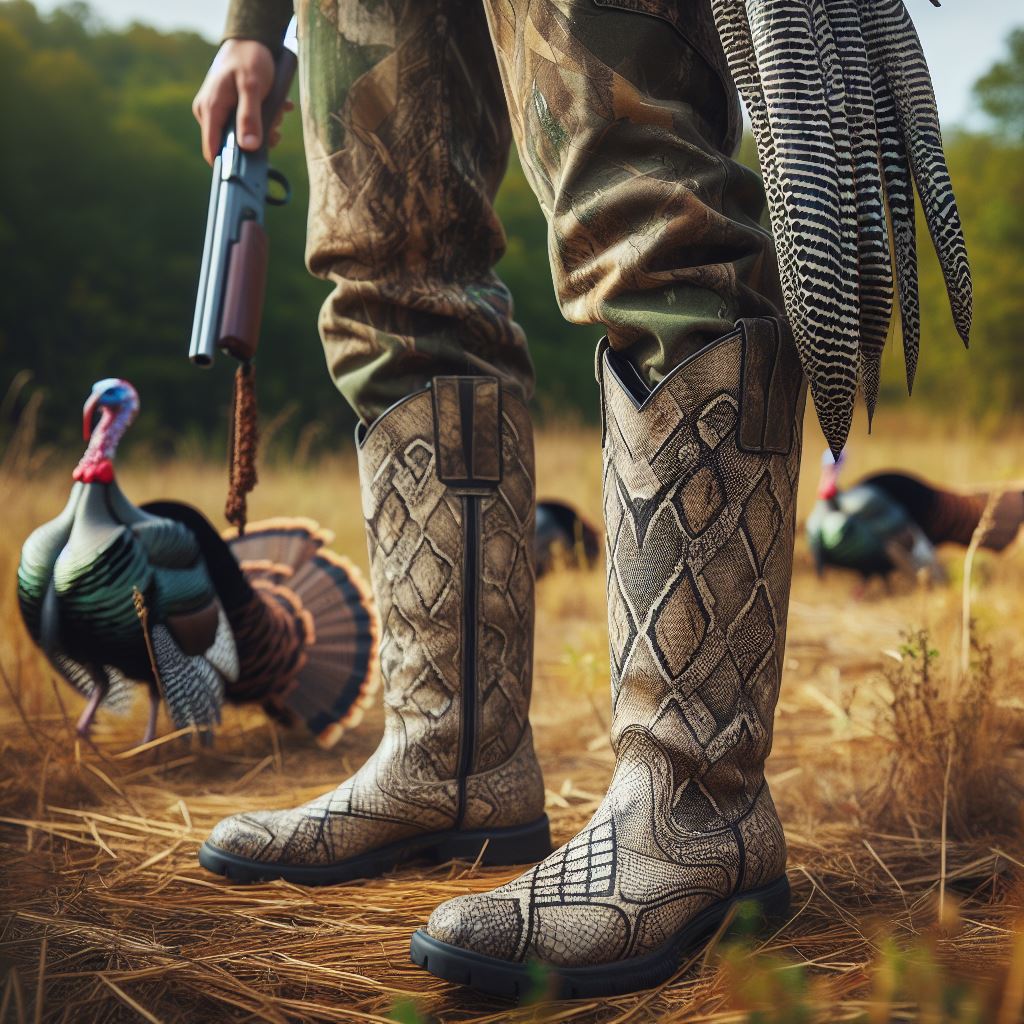
Many major hunting footwear companies offer reliable snake boots to choose from. Here are some of the top options to consider:
LaCrosse Venom Scent
LaCrosse Venom Scent

- If concealment from wildlife nose detection matters, LaCrosse’s exclusive Scent Suppression black leather Venom boots help you vanish from snakes and prey’s sniffing radar.
- Premium leather and 1000D nylon
- Durable rubber outsoles
- 360° snake guard
- Mossy Oak camo or brown
Top choice overall for comfort, camo options and scent control.
Irish Setter Vaprtrek
Irish Setter Men’s 2870 Vaprtrek Hunting Boot
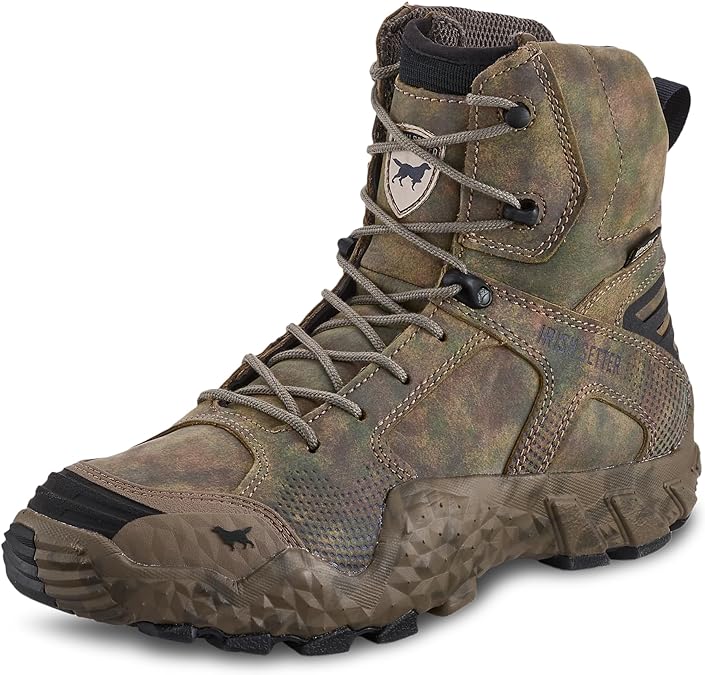
- For an elite balance of comfort, protection, and traction, the Irish Setter 2870 VaprTrek tops our saddle-hunting boot list for 2024. It remains sturdily durable through mile after mile of rough landscapes yet with enhanced mobility from strategic lighter-weight components.
- Leather/fabric upper
- RPM composite sole
- Ultralight 400g insulation
- Snake guard wrap
Lightweight and breathable option perfect for warm weather hunting.
Danner Pronghorn
Danner Pronghorn Hunting Boot
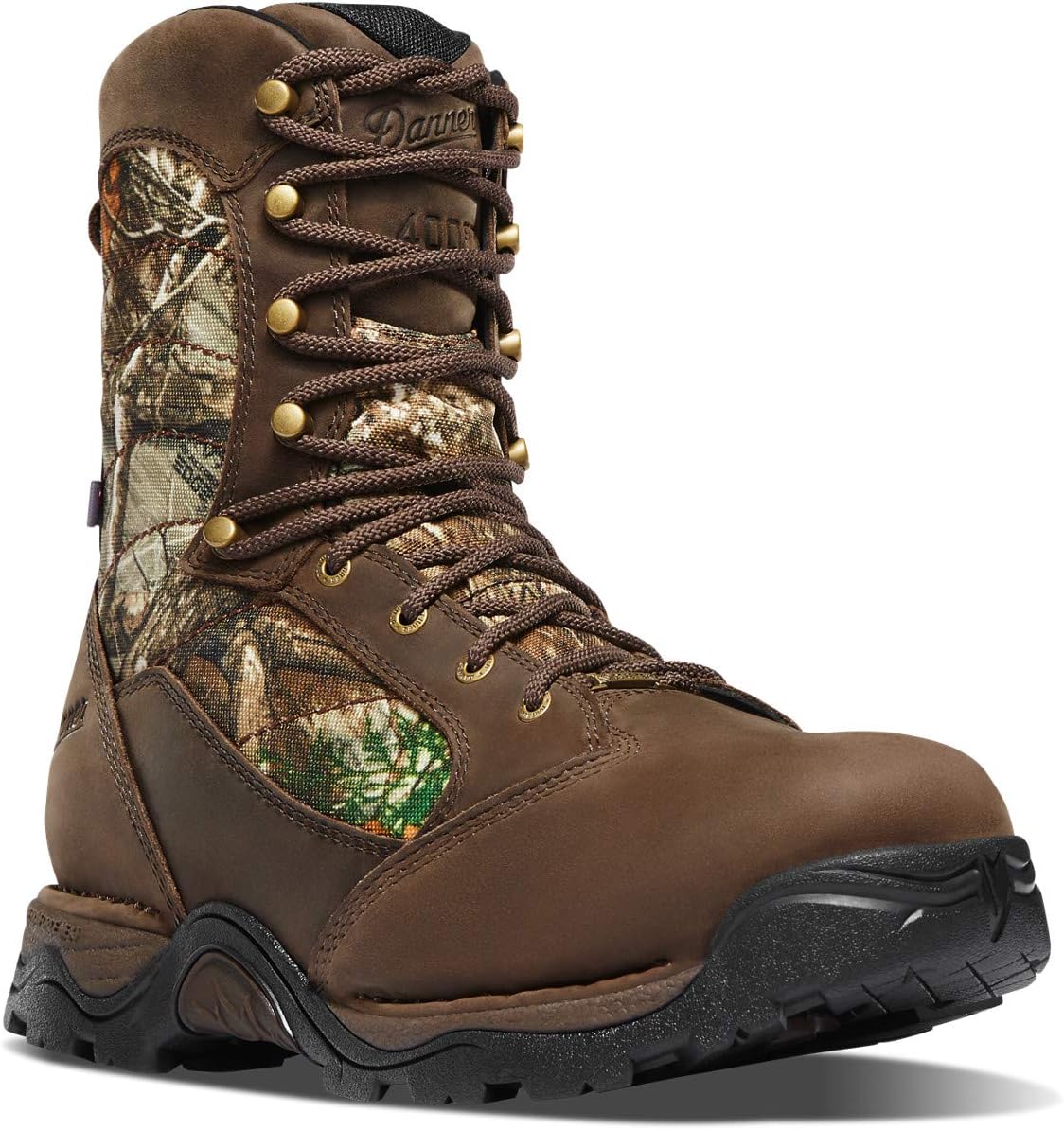
- Danner’s Pronghorn model offers a nice midpoint blend of rugged hunting performance and lightweight hiking dexterity nicely tailored for spending long hours seated in an elevated perch. The full-grain leather upper brings durable water protection even when hiking through wet brush while the Gore-Tex liner reliably wicks internal moisture.
- Full-grain leather
- Gore-Tex waterproofing
- Fiberglass shank
- Sturdy TPU outsole
Great rugged boot for harsh weather and negotiating rough terrain.
Muck Woody Max
Muck Boot Woody Max Rubber Insulated Men’s Hunting Boot

- 5mm CR Flex-Foam neoprene liner is 100% waterproof with exceptional comfort, flexibility, shock absorption and heat retention properties; adjusts to the contours of your foot to resist blisters and chafing
Stretch-fit comfort topline binding snugs calf to keep warmth in and cold & debris out
2mm thermal foam under the footbed for extra warmth
- 5mm neoprene flex-foam
- EverGuard snake protection
- Mossy Oak camo pattern
- Breathable Airmesh lining
Waterproof snake boot perfect for wet, marshy areas.
Rockrooster Tejas
ROCKROOSTER Magnolia 6″ Side-Zipper Wedge Boots for Men

- RockRooster Magnolia 6″ motorcycle boots for men with soft toe are lightweight to avoid feet and legs fatigue. An extra piece of leather at the toe upper where your shifter touches your boots, that can prevent the motorcycle boots from getting scuffs to extend boots life.
- Premium full-quill ostrich leather
- ViperClaw flexible guard
- Shock absorbing EVA midsole
- Rugged Vibram outsole
Expensive but ultra-lightweight and breathable in hot climates.
This covers some of the top manufacturers and models, but many others exist too. Look for established hunting footwear brands for the best combination of protection, quality and comfort.
Key Features to Look for in Snake Boots
With different brands and styles available, keep these key criteria in mind when selecting snake boots for turkey hunting:
Correct Size
Snake boots must fit snugly with no gaps for venom to leak through. Measure your calf circumference to get the right size. Trying on in stores is best.
16-18 Inch Height
The shaft needs to extend at least 16 inches up your calf to block snake bites. 17-18 inches is even better and offers more flexibility for tucking pants.
Waterproof
Waterproofing ensures feet stay dry in morning dew or marsh. Materials like leather or Gore-Tex provide reliable water protection.
Insulation
Insulation keeps your feet warm on chilly spring mornings. 200-400 gram Thinsulate is ideal for maintaining comfort and stealth.
Snake Guards
The internal snake guard (carbon fiber, Kevlar, etc.) must fully wrap around the boot to prevent penetrations.
Tread Design
Lugged, aggressive outsoles provide traction in soft ground, leaves or mud when chasing gobblers on the move.
Using this criteria helps identify which snake boots offer the right blend of bite protection and hunting performance.
Proper Fit and Sizing of Snake Boots
To maximize safety, you need snake boots that fit properly with no excess space or uncomfortable tightness:
- Snug fit – Boots should fit tight in the calf and ankle with no pinch points. Heel and toes should not slip when walking.
- No bunching – Excess wrinkling or fabric bunching can create gaps for venom to leak through. The boot should have a smooth, creaseless fit.
- Room for pants – The shaft needs room for tucking hunting pants inside cleanly. Measure circumference over pants.
- Match sock thickness – Try boots on with the socks you’ll wear hunting to ensure good fit. Thicker socks require more room.
- Consider insoles – Custom orthotics and aftermarket insoles can impact fit, so test with your insoles.
Taking the time to find your proper snake boot size and fit is a wise investment for your safety and comfort during long spring hunts.
Snake Boot Styles for Hunting Use
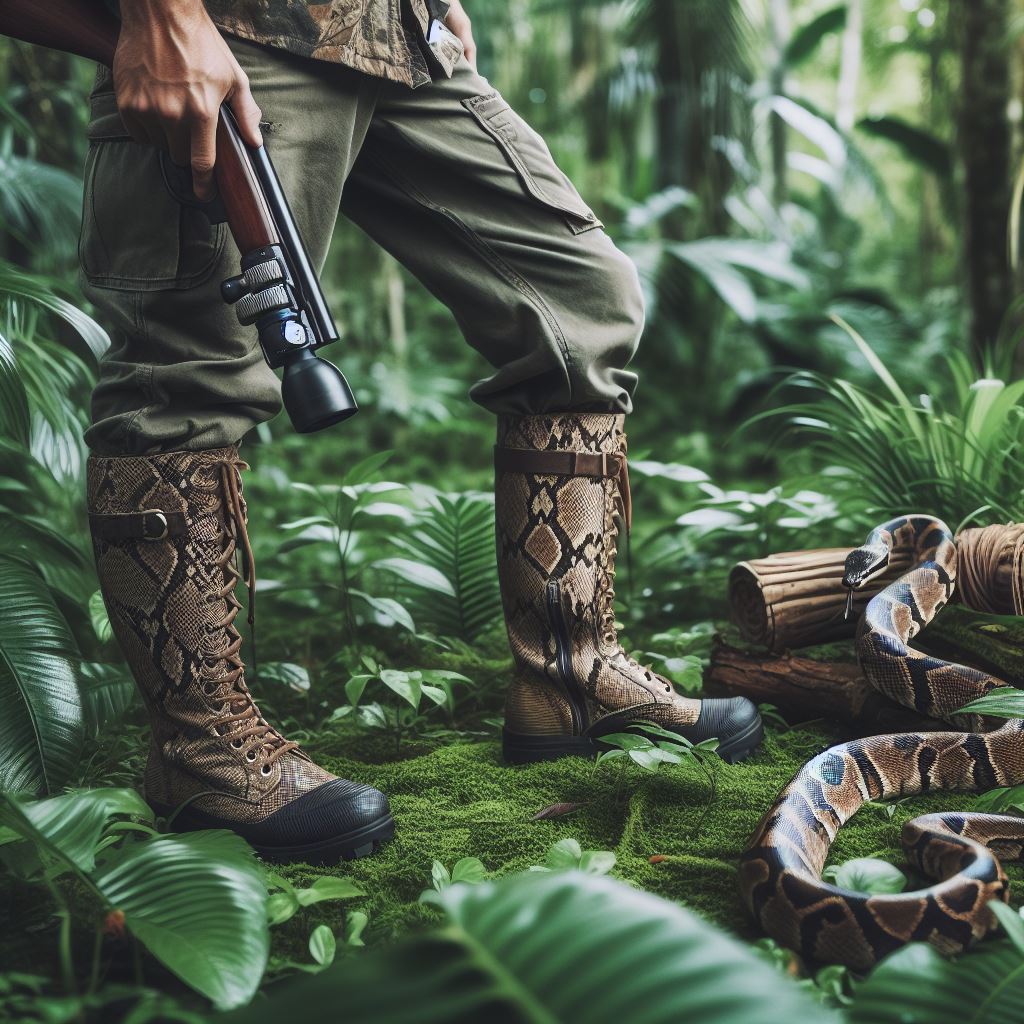
Snake boots come in a variety of styles to match conditions and hunters’ preferences:
Knee-High Snake Boots
- Shaft extends to knee level or slightly above.
- Provides maximum coverage and protection.
- Can limit mobility compared to shorter versions.
Mid-Calf Snake Boots
- Shaft stops near middle of calf.
- Maintains flexibility while blocking bites.
- Allows tucking pants easily.
- Most common snake boot height.
Ankle-Height Snake Boots
- Low shaft covers only ankle/lower leg.
- Maintains full mobility and movement.
- Less protection from snake bites.
- Good for warm weather.
Most turkey hunters do best with mid-calf length snake boots to balance protection and agility. But choose the option suiting your hunting style and climate.
Camouflage vs. Leather Snake Boots
Another decision is opting for camo patterned or plain/brown leather snake boots. Each has advantages:
- Camouflage Snake Boots – Patterned boots from leaves, brush or trees blend into spring background to avoid spooking turkeys.
- Leather Snake Boots – Plain leather boots make less noise crunching leaves and brush while stalking through the woods.
Consider when stealth vs. concealment are most important to you and whether the selected camo pattern actually matches your specific hunting area. Both options can be effective when used properly.
Breaking In New Snake Boots
Brand new snake boots will be stiff and require a break-in period to reach their full comfort potential. Here are some tips to properly break them in:
- Wear for short periods at home to mold to your feet before long hunts.
- Waterproofing sprays can soften leather to flex easier.
- Remove insoles and use thick socks to reduce friction while breaking in.
- Walk on inclines and uneven ground which flexes the boots more.
- Apply leather conditioner during break-in to soften material.
- Pack boots with newspaper or shoe trees between wearings to hold shape.
Investing this effort upfront makes a big difference in snake boots feeling like a natural extension of your foot for all-day turkey hunts.
Caring for Your Snake Boots
With proper care and maintenance, a quality pair of snake boots will protect you for years of hunting. Here are some care tips:
- Rinse/clean boots after use to prevent stain and odor buildup.
- Remove debris from treads that could damage floors or carpets.
- Allow boots to fully air dry between uses. Stuff with newspaper to wick moisture.
- Use leather conditioner every 2-3 months to keep the material supple.
- Store boots upright on boot trees with shafts fully extended.
- Replace worn laces that could fail in the field.
- Inspect for cracks or holes in guard material and get repaired.
Thank You For Reading Out The Whole Article, Good luck With Your Turkey Hunting Adventure!
Read More Articles
- Men’s Orthopedic Warm Snow Boots With Waterproof And Non-Slip Features for Winter
- Black Python Boots to Buy in 2024: A Comprehensive Guide
- The Complete Guide to Boot Wraps for Jeans
- The Ultimate Guide to Anteater Boots in 2024
- Boot Straps for Cowboy Boots: Elevating Style and Functionality
- 6 Inch vs 8 Inch Boots: A Comprehensive Guide for Boot Enthusiasts
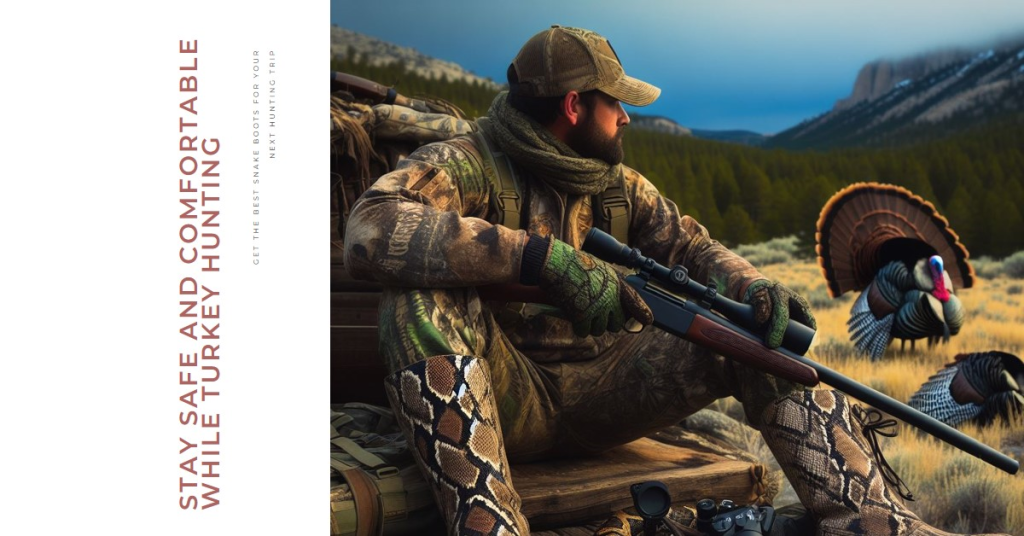
More Stories
The Complete Guide to Boot Wraps for Jeans
Black Python Boots to Buy in 2024: A Comprehensive Guide
Men’s Orthopedic Warm Snow Boots With Waterproof And Non-Slip Features for Winter